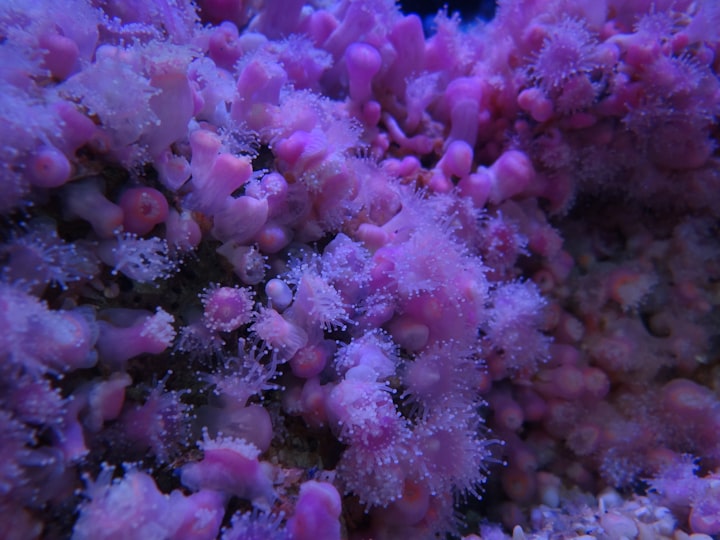Exploring the Bizarre and Mysterious Creatures of the Deep Ocean
Life of the oceans

The depths of the ocean have always captivated human imagination. In these mysterious realms, the normal rules of life seem to bend and twist, giving rise to some of the most bizarre and enigmatic creatures on Earth. The extreme conditions of the deep ocean, including darkness, cold, and high pressure, have led to the evolution of organisms with astonishing adaptations. From worms with no gut openings to transparent-toothed fish, the deep ocean is home to a world of wonders that challenge our understanding of biology and survival.
The Tongueless Worm: Riftia pachyptila
One of the most mind-boggling creatures of the deep ocean is the giant tube worm, Riftia pachyptila. These peculiar organisms thrive near hydrothermal vents, where boiling hot, chemical-laden water spews into the frigid depths. What's truly astounding is that these worms don't possess a traditional gut system with an opening for food intake or waste expulsion. Instead, their internal structure consists of a trophosome, a gut-like organ with no apparent way in or out.
Discovered in 1977 near the Galapagos Islands, Riftia's existence challenged our understanding of life's fundamental processes. They rely on symbiotic bacteria within their trophosome to convert the toxic chemicals from the vent water into a food source. The bacteria extract energy through chemosynthesis, a process analogous to photosynthesis. The bacteria-infested trophosome also contains blood vessels full of hemoglobin, allowing the worms to extract hydrogen sulfide from the vent water.
Black Swallowers: Chiasmodon niger
Delving deeper into the world of the deep ocean, we encounter the black swallower, a remarkable fish that has fascinated researchers. At around 700 to 2800 meters below the surface, these fish reside in the twilight and midnight zones of the ocean, where darkness reigns. The black swallower's claim to fame is its incredible ability to consume prey several times larger than itself. A dead black swallower found off the Cayman Islands contained an 86-centimeter snake mackerel in its stomach, a meal four times its own length.
To accommodate such massive meals, black swallowers possess an expandable stomach with transparent walls, allowing the stomach to stretch to extreme proportions. However, this unique adaptation sometimes backfires, leading to their demise. Decomposing prey releases gases that inflate the stomach, causing the fish to float to the surface, where it ultimately dies. Despite this curious limitation, black swallowers remain a testament to the extreme adaptability of life in the deep ocean.
Transparent Toothed Predator: Aristostomias scintillans
Venturing even deeper, we encounter the mysterious Aristostomias scintillans, commonly known as the shiny loosejaw. Residing at depths of around 700 to 2800 meters, these fish have evolved a set of transparent teeth that make their jaws virtually invisible to prey. As ambush predators, these fish use their jaws to engulf unsuspecting prey. Their transparency and dark body coloration allow them to blend seamlessly into the pitch-black depths of the ocean, giving them a significant advantage in hunting.
Aristostomias scintillans showcases the remarkable adaptations that have emerged in the deep ocean, where unique ecological niches require innovative survival strategies. Beyond their natural intrigue, these fish also serve as inspiration for material science, potentially leading to advancements in technology, such as transparent ceramics for armored windows and laser housings.
Oxygen-Defying Jellyfish: Deepstaria
Delving deeper into the mysteries of the deep ocean, we encounter the enigmatic jellyfish known as Deepstaria. These peculiar creatures have been mistaken for everything from plastic bags to sea monsters, highlighting their otherworldly appearance. Deepstaria jellies belong to the ancient Almariidae family and stand out due to their lack of tentacles. Instead, their large bell is adorned with stinging cells, suggesting a unique hunting strategy.
However, what truly baffles researchers is the presence of a mysterious guest within Deepstaria jellies. Most of these jellies host a giant isopod within their bodies, forming an inexplicable partnership. These isopods seem to take up residence within the jellyfish, though the nature of their relationship remains a mystery. The deep ocean continues to yield surprises and secrets, reminding us that there is still much to learn about the remarkable adaptations of its inhabitants.
The deep ocean remains one of the last frontiers of exploration, harboring a wealth of strange and captivating creatures. From gutless worms to stretchy-stomached fish and transparent-toothed predators, these organisms challenge our understanding of life and adaptation. As we continue to uncover the mysteries of the deep ocean, we are reminded that the natural world is full of wonders beyond our imagination.





Comments
There are no comments for this story
Be the first to respond and start the conversation.